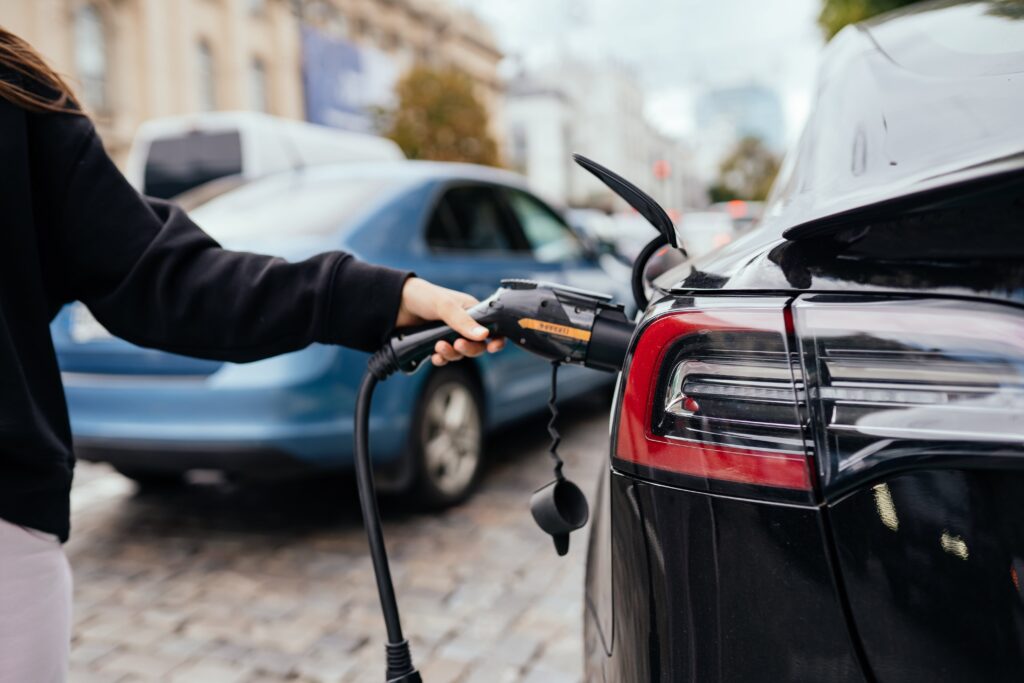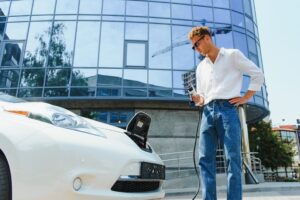
Auto industry experts predicted this to be the age of the electric vehicle (EV). With regulatory changes and a more eco-conscious society, EV car sales were once on a high-growth trajectory. EV inventory was once limited, and waitlists were common.
While electric vehicle and gas-powered inventory slowed during the pandemic’s supply chain impacts, recovery has emerged. Now, there’s an excess of EVs on dealer lots due to stagnant sales. As a result, auto dealerships will need new strategies to make this revenue stream grow.
The History of EV Car Sales
The modern electric vehicle market is much more efficient than its beginnings. In fact, the first EVs pre-dated gas-powered cars with experimental prototypes in the 1830s. Soon, they were forgotten until the electric revolution that began in the 21st century. The first vehicle with electric power was the 1997 Toyota Prius, and the first mass-market EV hit the sales floor in 2010 with the Nissan Leaf.
Since then, EVs on the road have continued to increase. In 2016, there were around one million on the roads. At the end of 2022, the number boomed to 26 million. EV sales represented 14% of new cars sold in 2022, a 5% increase from the year before.
The Current State of EV Inventory, Sales, and Manufacturer Plan

Expert projections expected strong sales in 2023, but the inventory overages are making this growth harder to achieve. The current and future state involves various factors and decisions.
EVs had a 98-day EV supply at the end of September, decreasing somewhat due to a 7% increase in sales. A steady increase in sales has not kept pace with the influx of inventory.
Manufacturers expect to bring 90 new EV models to the automotive market by 2025. However, some are rethinking their electric vehicle production strategy. Porsche Macan planned to debut alongside the phasing out of the combustion-engine model. Now, they’re having second thoughts because they believe public charging infrastructure is insufficient.
Mercedes-Benz is also reconsidering phasing out ICE-powered models in favor of EVs. The automaker justified the slowdown with comments about an uncertain economy and feedback from dealers.
Once considered a strong contender to win the EV wars, Volkswagen also slashed production and paused building new factories. It plans to do so by 30%, citing “strong customer reluctance” as the primary reason for cutbacks on electric models.
Ford announced it would postpone its $12 billion EV investment, and GM made similar moves, abandoning its target to build 400,000 EVs in the first part of 2024.
These market trends and impacts signal electric car inventory reduction by manufacturers, but why aren’t consumers buying them?
Why Aren’t Consumers Buying Electric Vehicles?
Are electric cars selling well? As noted, sales increased this year, but there are many things impacting consumers making the switch.
The Gap Between Consideration and Purchase
There’s a wide gap between EV consideration and purchase. The 2023 Cox Automotive Path to EV Adoption concluded that consideration grew with 51% of consumers in this mindset. However, that’s not turning into purchase intent. Price was the highest deterrent.
Servicing Concerns
Maintaining an EV is much different than gas cars. It requires new equipment and a skilled workforce. Consumers have apprehension about the availability of it and its costs.
Limited Product Knowledge
Limited expertise of electric vehicless also impacts consumer demand. While there are many resources online for research, car buyers want to turn to local dealers to learn more. Thus, your dealership must improve its knowledge to become the preferred source for consumers.
Lack of Charging Stations
Consumers have doubts about infrastructure. An Urban Science survey of auto buyers found that the low availability of charging stations was a concern. Expansion of this is happening with infrastructure investment, but rural areas are far behind.
Concerns of Driving Range
In addition to infrastructure worries, drivers worry about charging distance. It was the top barrier to purchase, according to an Urban Science survey on EVs. New models are optimizing this, but without full confidence, buyers may keep waiting.
Are Dealers Losing Money on Electric Vehicles?
Money lost on your lot comes back to the pace of inventory turnover. The longer it sits, the more you incur for warehousing, maintenance, and other holding costs. There’s also a depreciation risk that necessitates discounts.
Factors Contributing to Rising EV Inventory Levels
What’s at the root of rising EV inventory levels? It’s a complex ecosystem, affected by manufacturer production, consumer demand, and dealer inventory turn effectiveness.
The leading causes of the over-inventory challenge include:
- Production outputs: Manufacturers only recently began to curb or pause production, so the market remains flooded. Companies made these decisions based on consumer interest and demand and created those long waitlists. Now that there’s more hesitation, manufacturers are course-correcting.
- More competition: Production ramp-ups also saw more choices for EV shoppers. With more options, brand loyalty may not influence consumers.
- The electric vehicle market is still young: It’s still in its infancy, with consumer evaluation slow. Manufacturers may have taken early signs of growing interest too literally, rushing products to market in a landscape where volatility is high.
- Purchase prices still out of reach: Many consumers, especially younger generations, are more eco-conscious and prefer EVs. The problem is they’re just not as affordable, in most cases, as gas vehicles.
The Impact of Current EV Supply Levels
Before the rise in electric vehicle inventory levels, pricing declined, with manufacturers optimizing production at scale. The competition also ushered in lower costs for dealer acquisition. Carmakers’ positive outlook also caused dealerships to seek out more of this inventory.
The current EV levels in 2023 far exceeded previous years. Everything about EV sales is supply and demand. Demand should drive supply, but that can change quickly. What this does bring is the opportunity for more incentives to push this inventory.
The Future of EV Sales
The future of electric vehicle sales growth can still be very bright. This is a product with staying power. As it matures, volatility should decrease. As price cuts continue due to high inventory, those in the consideration phase may find deals too enticing to ignore. Additionally, the technology in EVs to improve range and safety coupled with charging station expansion will positively impact demand.
Key to this will also be how your dealership markets them. Using VIN-specific marketing tools, you can promote and identify shoppers for any VIN, including EVs. It runs on data intelligence and leverages AI and machine learning for precise targeting. You can have this type of power with Lotlinx inventory management solutions.
Optimize Your Inventory with Lotlinx
Optimize your EV inventory with a platform that helps you analyze and improve inventory management strategies in a changing market. Harness the power of data and insights to improve your inventory turn and maximize profitability.
Learn more by requesting a demo today.